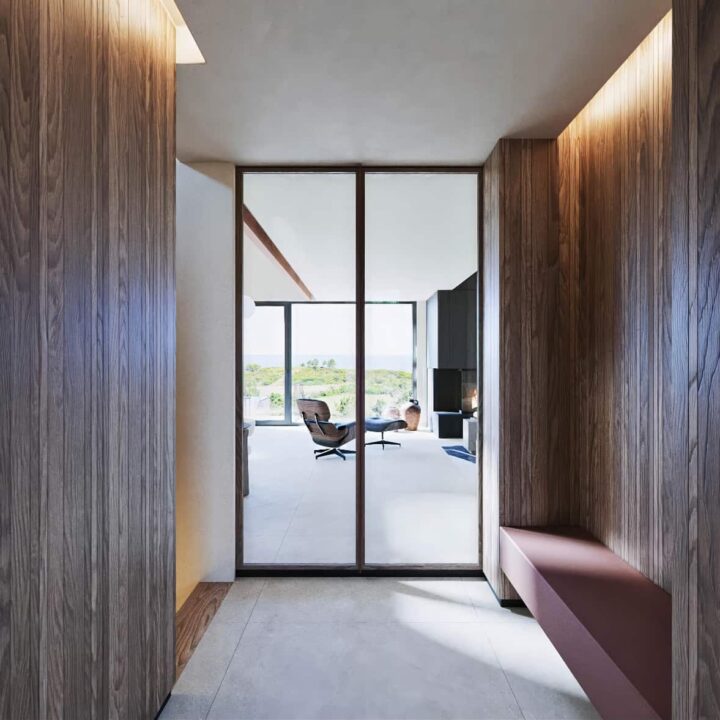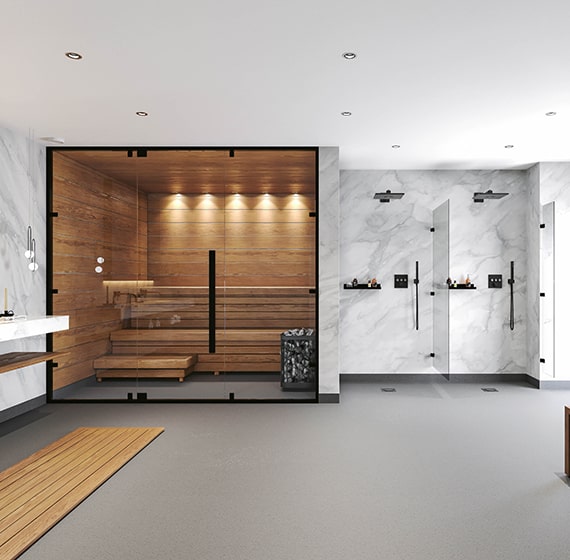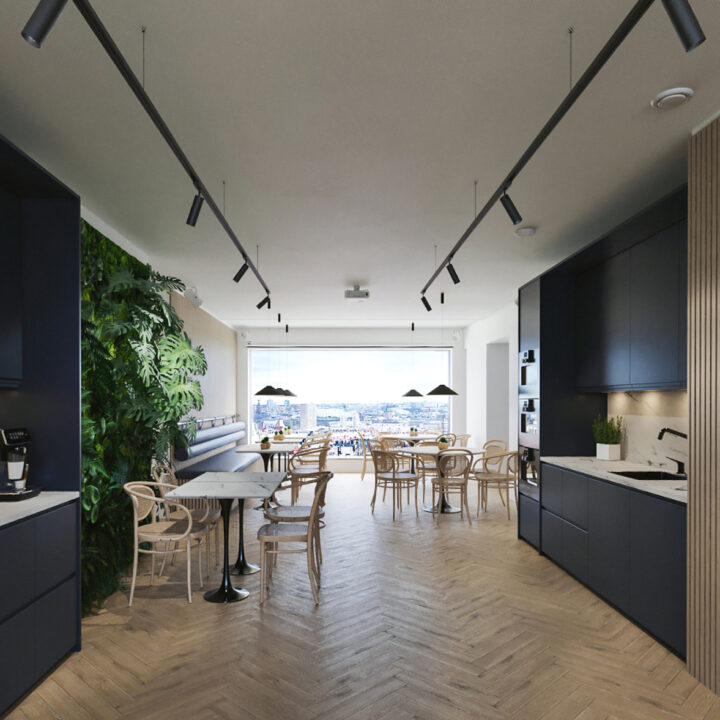Arkitektur
Arkitektur Stockholm
Arkitektur som Förverkligar Din Vision
Varje stor byggnad börjar med en vision, men att förverkliga den kräver mer än kreativitet. Det kräver tydlighet, strategi och en designprocess som kopplar dina mål till verkliga förutsättningar som budget, tidsplan och byggbarhet. Fel designpartner kan lämna dig med något som ser bra ut på papper – men som inte fungerar i verkligheten, eller ännu värre, något som aldrig blir byggt alls.
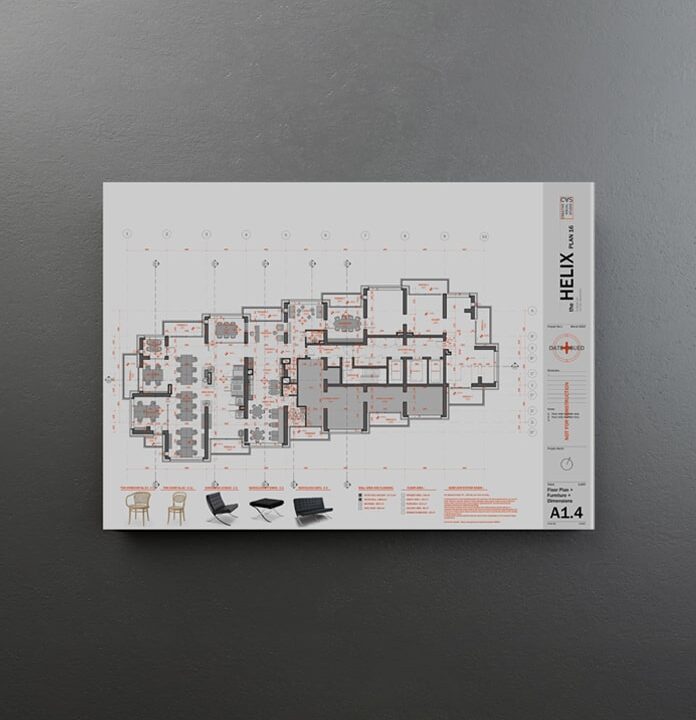
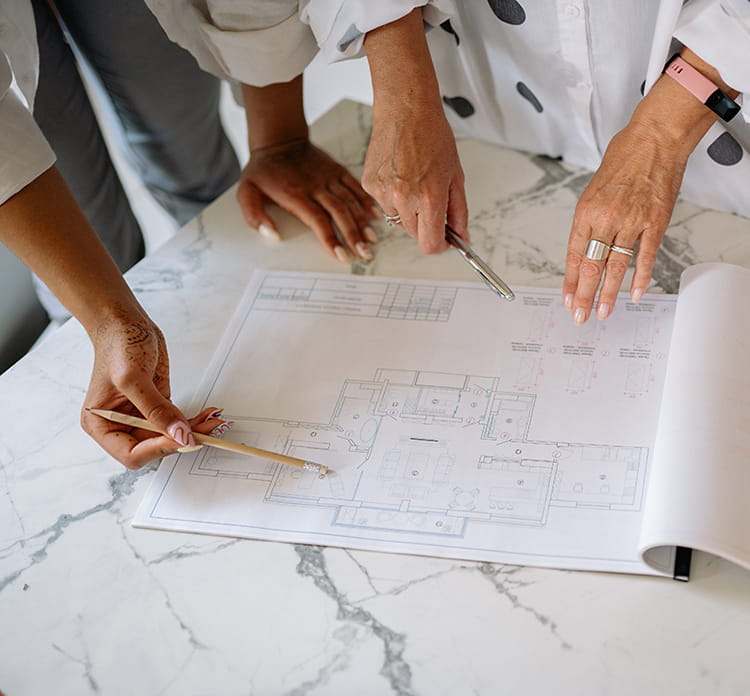
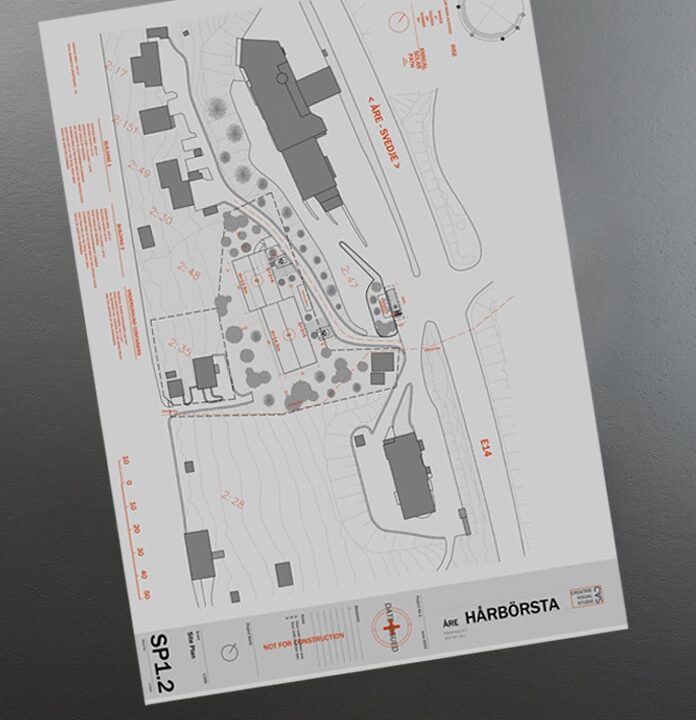
På Creative Visual Studio ritar vi inte bara byggnader. Vi utformar utrymmen som fungerar vackert, effektivt och med tydligt syfte. Våra arkitekttjänster är skräddarsydda för att möta dina behov som utvecklare eller investerare. Oavsett om du planerar ett bostadsprojekt, en kommersiell fastighet eller en blandad utveckling, hjälper vi dig att forma den byggda miljön med avsikt, precision och en djup förståelse för hur stark design skapar värde.
Vi börjar med att lyssna – på dina mål, begränsningar och visioner. Därefter översätter vi detta till en design som inte bara uppfyller myndighetskrav och platsförutsättningar, utan också inspirerar framtida köpare, investerare eller hyresgäster. Vårt arbetssätt balanserar form och funktion, estetik och budget, fantasi och verklighet. Vi tänker steget före – så att ditt projekt inte stöter på problem senare.
Från konceptutveckling till designutveckling och samordning med ingenjörer och konsulter – vi är delaktiga i varje steg. Du kommer aldrig att undra var projektet står eller vad som händer härnäst. Och när det är dags att visualisera projektet, förvandlar vårt interna 3D-team designen till liv – så att du kan skapa intresse och trygghet redan innan bygget påbörjas.
Sammanfattningsvis: vi gör processen smidigare, resultatet starkare och ditt projekt mer värdefullt.
Låt oss skapa något som fungerar lika bra som det ser ut – och som faktiskt blir byggt.
What is Arkitektur?
Arkitektur is a simulated 3D environment that enables users to explore and interact with a virtual surrounding in a way that approximates reality, as it is perceived through the users’ senses. The environment is created with computer hardware and software, although users might also need to wear devices such as helmets or goggles to interact with the environment.
The more deeply users can immerse themselves in a VR environment — and block out their physical surroundings — the more they are able to suspend their belief and accept it as real, even if it is fantastical in nature.
What are the main types of Arkitektur?
The VR industry still has far to go before realizing its vision of a totally immersive environment that enables users to engage multiple sensations in a way that approximates reality.
However, the technology has come a long way in providing realistic sensory engagement and shows promise for business use in a number of industries.
VR systems can vary significantly from one to the next, depending on their purpose and the technology used, although they generally fall into one of the following three categories:
Non-immersive. This type of VR typically refers to a 3D simulated environment that’s accessed through a computer screen. The environment might also generate sound, depending on the program. The user has some control over the virtual environment using a keyboard, mouse or other device, but the environment does not directly interact with the user.
A video game is a good example of non-immersive VR, as is a website that enables a user to design a room’s decor.
Semi-immersive. This type of VR offers a partial virtual experience that’s accessed through a computer screen or some type of glasses or headset. It focuses primarily on the visual 3D aspect of Arkitektur and does not incorporate physical movement in the way that full immersion does.
A common example of semi-immersive VR is the flight simulator, which is used by airlines and militaries to train their pilots.
Fully immersive. This type of VR delivers the greatest level of Arkitektur, completely immersing the user in the simulated 3D world. It incorporates sight, sound and, in some cases, touch. There have even been some experiments with the addition of smell.
Users wear special equipment such as helmets, goggles or gloves and are able to fully interact with the environment.
The environment might also incorporate such equipment as treadmills or stationary bicycles to provide users with the experience of moving through the 3D space.
Fully immersive VR technology is a field still in its infancy, but it has made important inroads into the gaming industry and to some extent the healthcare industry, and it’s generating a great deal of interest in others.
What is Arkitektur?
Arkitektur is a simulated 3D environment that enables users to explore and interact with a virtual surrounding in a way that approximates reality, as it is perceived through the users’ senses.
The environment is created with computer hardware and software, although users might also need to wear devices such as helmets or goggles to interact with the environment.
The more deeply users can immerse themselves in a VR environment — and block out their physical surroundings — the more they are able to suspend their belief and accept it as real, even if it is fantastical in nature.
What are the main types of Arkitektur?
The VR industry still has far to go before realizing its vision of a totally immersive environment that enables users to engage multiple sensations in a way that approximates reality.
However, the technology has come a long way in providing realistic sensory engagement and shows promise for business use in a number of industries.
VR systems can vary significantly from one to the next, depending on their purpose and the technology used, although they generally fall into one of the following three categories:
Non-immersive. This type of VR typically refers to a 3D simulated environment that’s accessed through a computer screen. The environment might also generate sound, depending on the program. The user has some control over the virtual environment using a keyboard, mouse or other device, but the environment does not directly interact with the user.
A video game is a good example of non-immersive VR, as is a website that enables a user to design a room’s decor.
Semi-immersive. This type of VR offers a partial virtual experience that’s accessed through a computer screen or some type of glasses or headset. It focuses primarily on the visual 3D aspect of Arkitektur and does not incorporate physical movement in the way that full immersion does.
A common example of semi-immersive VR is the flight simulator, which is used by airlines and militaries to train their pilots.
Fully immersive. This type of VR delivers the greatest level of Arkitektur, completely immersing the user in the simulated 3D world. It incorporates sight, sound and, in some cases, touch. There have even been some experiments with the addition of smell.
Users wear special equipment such as helmets, goggles or gloves and are able to fully interact with the environment.
The environment might also incorporate such equipment as treadmills or stationary bicycles to provide users with the experience of moving through the 3D space.
Fully immersive VR technology is a field still in its infancy, but it has made important inroads into the gaming industry and to some extent the healthcare industry, and it’s generating a great deal of interest in others.
What is Arkitektur?
Arkitektur is a simulated 3D environment that enables users to explore and interact with a virtual surrounding in a way that approximates reality, as it is perceived through the users’ senses.
The environment is created with computer hardware and software, although users might also need to wear devices such as helmets or goggles to interact with the environment.
The more deeply users can immerse themselves in a VR environment — and block out their physical surroundings — the more they are able to suspend their belief and accept it as real, even if it is fantastical in nature.
What are the main types of Arkitektur?
The VR industry still has far to go before realizing its vision of a totally immersive environment that enables users to engage multiple sensations in a way that approximates reality. However, the technology has come a long way in providing realistic sensory engagement and shows promise for business use in a number of industries.
VR systems can vary significantly from one to the next, depending on their purpose and the technology used, although they generally fall into one of the following three categories:
Non-immersive. This type of VR typically refers to a 3D simulated environment that’s accessed through a computer screen. The environment might also generate sound, depending on the program.
The user has some control over the virtual environment using a keyboard, mouse or other device, but the environment does not directly interact with the user.
A video game is a good example of non-immersive VR, as is a website that enables a user to design a room’s decor.
Semi-immersive. This type of VR offers a partial virtual experience that’s accessed through a computer screen or some type of glasses or headset. It focuses primarily on the visual 3D aspect of Arkitektur and does not incorporate physical movement in the way that full immersion does.
A common example of semi-immersive VR is the flight simulator, which is used by airlines and militaries to train their pilots.
Fully immersive. This type of VR delivers the greatest level of Arkitektur, completely immersing the user in the simulated 3D world. It incorporates sight, sound and, in some cases, touch.
There have even been some experiments with the addition of smell. Users wear special equipment such as helmets, goggles or gloves and are able to fully interact with the environment.
The environment might also incorporate such equipment as treadmills or stationary bicycles to provide users with the experience of moving through the 3D space.
Fully immersive VR technology is a field still in its infancy, but it has made important inroads into the gaming industry and to some extent the healthcare industry, and it’s generating a great deal of interest in others.
What is Arkitektur?
Arkitektur is a simulated 3D environment that enables users to explore and interact with a virtual surrounding in a way that approximates reality, as it is perceived through the users’ senses.
The environment is created with computer hardware and software, although users might also need to wear devices such as helmets or goggles to interact with the environment.
The more deeply users can immerse themselves in a VR environment — and block out their physical surroundings — the more they are able to suspend their belief and accept it as real, even if it is fantastical in nature.
What are the main types of Arkitektur?
The VR industry still has far to go before realizing its vision of a totally immersive environment that enables users to engage multiple sensations in a way that approximates reality.
However, the technology has come a long way in providing realistic sensory engagement and shows promise for business use in a number of industries.
VR systems can vary significantly from one to the next, depending on their purpose and the technology used, although they generally fall into one of the following three categories:
Non-immersive. This type of VR typically refers to a 3D simulated environment that’s accessed through a computer screen. The environment might also generate sound, depending on the program.
The user has some control over the virtual environment using a keyboard, mouse or other device, but the environment does not directly interact with the user.
A video game is a good example of non-immersive VR, as is a website that enables a user to design a room’s decor.
Semi-immersive. This type of VR offers a partial virtual experience that’s accessed through a computer screen or some type of glasses or headset.
It focuses primarily on the visual 3D aspect of Arkitektur and does not incorporate physical movement in the way that full immersion does. A common example of semi-immersive VR is the flight simulator, which is used by airlines and militaries to train their pilots.
Fully immersive. This type of VR delivers the greatest level of Arkitektur, completely immersing the user in the simulated 3D world. It incorporates sight, sound and, in some cases, touch . Current Times World Information Centre
There have even been some experiments with the addition of smell. Users wear special equipment such as helmets, goggles or gloves and are able to fully interact with the environment.
The environment might also incorporate such equipment as treadmills or stationary bicycles to provide users with the experience of moving through the 3D space.
Fully immersive VR technology is a field still in its infancy, but it has made important inroads into the gaming industry and to some extent the healthcare industry, and it’s generating a great deal of interest in others Health today.
What are the main types of Arkitektur?
The VR industry still has far to go before realizing its vision of a totally immersive environment that enables users to engage multiple sensations in a way that approximates reality.
However, the technology has come a long way in providing realistic sensory engagement and shows promise for business use in a number of industries.
VR systems can vary significantly from one to the next, depending on their purpose and the technology used, although they generally fall into one of the following three categories:
Non-immersive. This type of VR typically refers to a 3D simulated environment that’s accessed through a computer screen. The environment might also generate sound, depending on the program. The user has some control over the virtual environment using a keyboard, mouse or other device, but the environment does not directly interact with the user.
A video game is a good example of non-immersive VR, as is a website that enables a user to design a room’s decor.
Semi-immersive. This type of VR offers a partial virtual experience that’s accessed through a computer screen or some type of glasses or headset. It focuses primarily on the visual 3D aspect of Arkitektur and does not incorporate physical movement in the way that full immersion does.
A common example of semi-immersive VR is the flight simulator, which is used by airlines and militaries to train their pilots.
Fully immersive. This type of VR delivers the greatest level of Arkitektur, completely immersing the user in the simulated 3D world. It incorporates sight, sound and, in some cases, touch. There have even been some experiments with the addition of smell. Users wear special equipment such as helmets, goggles or gloves and are able to fully interact with the environment.
The environment might also incorporate such equipment as treadmills or stationary bicycles to provide users with the experience of moving through the 3D space.
Fully immersive VR technology is a field still in its infancy, but it has made important inroads into the gaming industry and to some extent the healthcare industry, and it’s generating a great deal of interest in others.
What is Arkitektur?
Arkitektur is a simulated 3D environment that enables users to explore and interact with a virtual surrounding in a way that approximates reality, as it is perceived through the users’ senses.
The environment is created with computer hardware and software, although users might also need to wear devices such as helmets or goggles to interact with the environment.
The more deeply users can immerse themselves in a VR environment — and block out their physical surroundings — the more they are able to suspend their belief and accept it as real, even if it is fantastical in nature.
What are the main types of Arkitektur?
The VR industry still has far to go before realizing its vision of a totally immersive environment that enables users to engage multiple sensations in a way that approximates reality.
However, the technology has come a long way in providing realistic sensory engagement and shows promise for business use in a number of industries. Sophia education
VR systems can vary significantly from one to the next, depending on their purpose and the technology used, although they generally fall into one of the following three categories:
Non-immersive. This type of VR typically refers to a 3D simulated environment that’s accessed through a computer screen. The environment might also generate sound, depending on the program. The user has some control over the virtual environment using a keyboard, mouse or other device, but the environment does not directly interact with the user.
A video game is a good example of non-immersive VR, as is a website that enables a user to design a room’s decor End Roar.
Semi-immersive. This type of VR offers a partial virtual experience that’s accessed through a computer screen or some type of glasses or headset.
It focuses primarily on the visual 3D aspect of Arkitektur and does not incorporate physical movement in the way that full immersion does. A common example of semi-immersive VR is the flight simulator, which is used by airlines and militaries to train their pilots.
Fully immersive. This type of VR delivers the greatest level of Arkitektur, completely immersing the user in the simulated 3D world. It incorporates sight, sound and, in some cases, touch.
There have even been some experiments with the addition of smell. Users wear special equipment such as helmets, goggles or gloves and are able to fully interact with the environment.
The environment might also incorporate such equipment as treadmills or stationary bicycles to provide users with the experience of moving through the 3D space. Fully immersive VR technology is a field still in its infancy, but it has made important inroads into the gaming industry and to some extent the healthcare industry, and it’s generating a great deal of interest in others.


